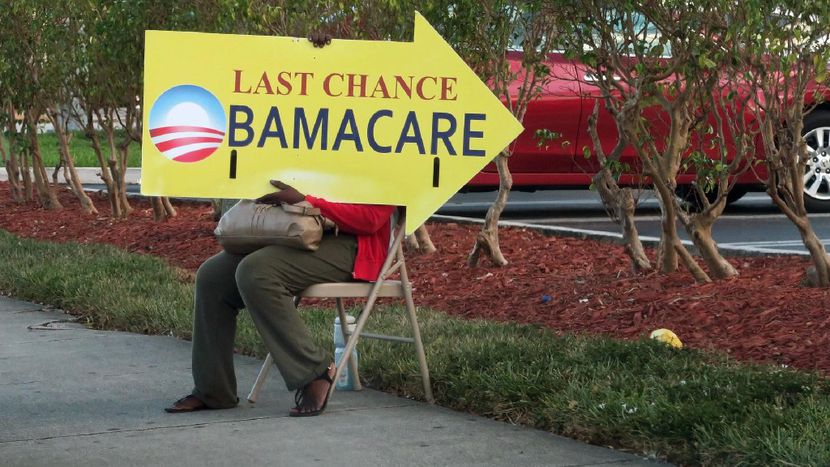Originally posted at The Dallas Morning News, February 2017.
Brenda is 60 and lives in the Dallas-Fort Worth area. Her husband is 65, retired and on Medicare. But for Brenda, who is self-employed, her only option is Obamacare.
Brenda earns too much to get an Obamacare subsidy. Last year, she enrolled with Aetna in a PPO policy. A PPO is a preferred provider policy that lets Brenda choose her doctors and hospitals. That policy cost $6,552 for the year with a deductible of $6,000.
This year, Aetna is marketing the same policy but at more than double the premium cost — $13,356. Were she able to stay with Aetna, Brenda would have to shell out $19,356 before she received a penny back on the policy.
But that isn’t the worst part. The really bad news is that Aetna is not offering its PPO or any other policy in North Texas. Neither are Cigna, Humana, United Healthcare and others. The only health insurance provider left is Blue Cross, which offers two extremely expensive and, from Brenda’s perspective, unacceptable HMO plans.
HMO stands for health maintenance organization; it restricts which doctors you can see and which hospitals you can use. The better of the two Blue Cross plans comes with an annual $9,900 premium and a $6,500 deductible. But Brenda would be forced to change doctors and have access to only two hospitals, which she feels are among the worst in her area.
Brenda is an unhappy camper.
She realizes that buying insurance has a huge benefit even if you never receive a penny back. It provides peace of mind against catastrophic health care bills. But how much peace of mind is there if she has to pinch pennies to cover a huge premium and a major deductible — and is then forced to use doctors and hospitals she doesn’t trust?
But things could get worse. The uninsured now face a tax penalty equal to the larger of $695, or 2.5 percent of income. The new administration, no friend of Obamacare, intends to eliminate those penalties. If so, healthy young people will likely drop out and return to being uninsured. This will drive up the cost of Obamacare for those who stay.
Consequently, Brenda will face even higher costs in potentially even more restricted plans. And more health insurers will drop out of Obamacare entirely, as Humana did this week.
Brenda told me on the phone that if they eliminated the tax penalty, she’d consider leaving Obamacare and buying far cheaper health insurance in Mexico. “If I’m going to get dicey health care, why starve for it?”
So how can we fix health care so it doesn’t drive us all broke and provides everyone a basic policy?
You’d think the Republicans, having gone bananas over Obamacare for years, would have a sensible replacement. They don’t.
But here’s an answer. I call it the Purple Health Plan, since it combines elements that both Red Republicans and Blue Democrats will like.
It’s simple: eight provisions that fit on a postcard:
1. All Americans receive a free voucher each year from Uncle Sam to purchase, in full, an identical basic insurance plan from the insurer of their choice. The insurer, in turn, hands the voucher to Uncle Sam and receives the full amount indicated.
2. Having a single plan (not multiple plans called silver, gold, platinum, etc.) will turn the provision of basic health insurance into an intensely competitive market, like that for wheat.
3. The vouchers are based on anyone’s pre-existing conditions; those with higher expected health care costs receive larger vouchers. Since the poor are in worse health than the rich, this plan is progressive.
4. Making the vouchers equal to each person’s expected health care costs means insurers will be able to make as much money insuring the sick as the healthy. Consequently, insurers will have no incentive to turn anyone away or avoid areas with sicker than average inhabitants. Moreover, no insurer could legally deny coverage.
5. A panel of doctors would set the annual coverages of the basic plan subject to a strict budget, namely that the total cost of the vouchers not exceed 7 percent of GDP. That’s what’s currently being spent on Medicare, Medicaid, Obamacare and the tax breaks to employer-based plans.
6. Insurance companies compete and can incentivize their participants to improve their health.
7. Participants could purchase supplemental insurance coverage from their basic plan providers.
8. Medicare, Medicaid, Obamacare and tax breaks to employer-based insurance would be eliminated.
This isn’t a dreaded (by some) single-payer plan, where the government provides as well as pays for health care. Instead, it’s a single-payer system but one with multiple private providers.
Why haven’t we adopted this before? Our politicians have been too scared to fix things from scratch. But that’s exactly what’s needed.
This article was originally published at The Dallas Morning News on February 17, 2017. (http://bit.ly/2yCqiyu)

0 Comments